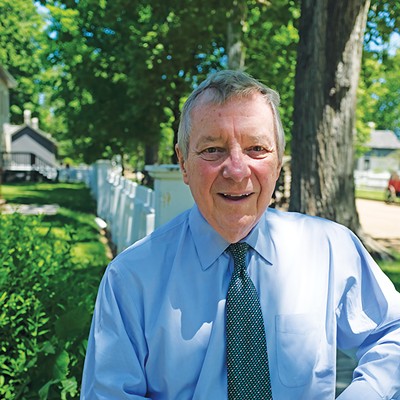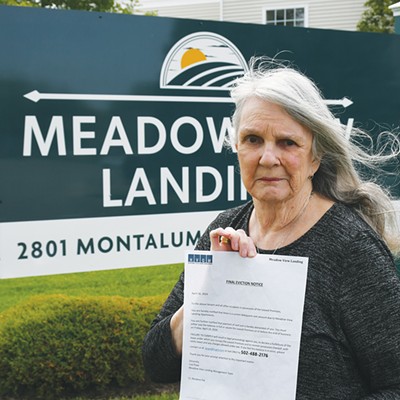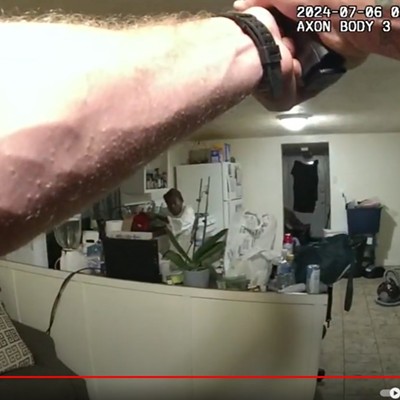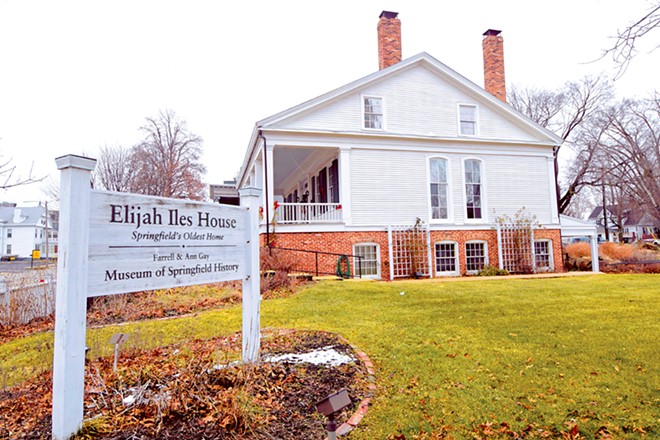
The Lincoln Home National Historic Site may soon be larger and tell more of Springfield's history if several local organizations are successful in their efforts to expand the site's boundaries to encompass the old and the new.
The Elijah Iles House Foundation Board on Dec. 29 passed a resolution encouraging the National Park Service to expand the historic site boundary to include the Iles House at Seventh and Cook streets and the soon-to-be-reconstructed Lincoln Cottage on Eighth Street, across the alley from the Iles House.
The Park Service could take over the operation and maintenance of the Iles House and the Lincoln Cottage if the historic site boundaries are extended. These parcels would form an unbroken expansion of the Park Service property from its current boundary along Edwards Street southward to Cook Street.
Together with the Julius Rosenwald Home in the Lincoln Home neighborhood, these sites would bring more than just local attention to certain aspects of Springfield history, while further illuminating Abraham Lincoln's legacy.
"The best way to preserve that house"
The Elijah Iles House Foundation Board resolution offers to donate the Iles House property and its parking lot immediately to the east of the home to the National Park Service, contingent on the Park Service's acceptance of the adjoining Lincoln Cottage property, which is being developed by the Abraham Lincoln Association.
"The Iles House took this step because we felt the best way to preserve that house and those grounds over the medium to long term is with an organization larger than the few, small, devoted donors around here," said Iles House Foundation President James Cornelius. "We're pretty confident that the National Park Service would be able to take even better care of it, presumably with more trained staff and possibly a bigger budget, and certainly a bigger publicity voice than we have been able to manage."
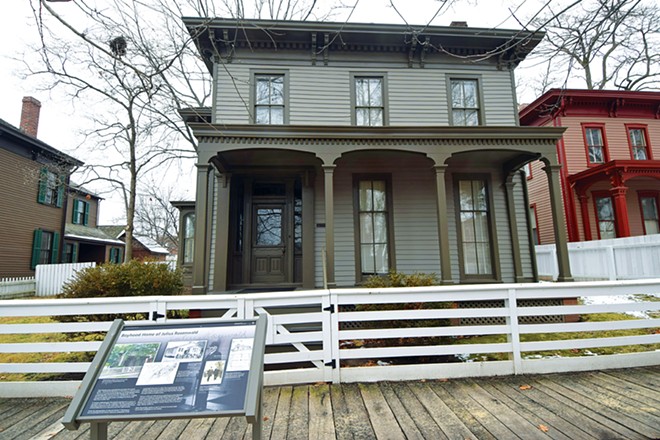
Before the COVID-19 pandemic, Elijah Iles House Foundation membership averaged 300 per year, Cornelius said. The organization recently changed its fiscal year to match the calendar year so its annual membership drive just got underway, with approximately 150 active members on the books but more joining every week.
Cornelius, the former Lincoln Curator at the Abraham Lincoln Presidential Library and Museum, said interpreting the Iles House as part of the Lincoln Home site would make sense. Although there's currently no proof that Lincoln was ever a visitor in the Iles House while it belonged to Iles, he said that Lincoln and Iles were well acquainted and served in the Black Hawk War together.
"Iles' life along with Lincoln's in this town is something that the Park Service seems to be interested in incorporating," Cornelius said. "Then you add in the next and longest-term owner of that home, Robert Irwin, who was Lincoln's personal banker and handled his affairs while Lincoln was in the White House. It makes sense to incorporate that aspect of the Lincoln story."
A direct Abraham Lincoln connection may be a key factor in the Park Service's deliberations regarding the Iles House in particular. Not to worry, said Abraham Lincoln Association President Michael Burlingame, who is also a Lincoln author and professor of history at University of Illinois Springfield.
"Lincoln's neighbor, banker and political ally, Robert Irwin, was, according to his nephew William Corneau, 'one of the most devoted friends, both socially and politically, that Abraham Lincoln ever had,'" Burlingame said. "Irwin regularly hosted Lincoln at his comfortable, nearby home, which had once belonged to Springfield pioneer Elijah Iles."
Burlingame said the Lincolns often shopped at Irwin's dry goods store and had an active account at Irwin's bank. Irwin helped to fund Lincoln's political campaigns and accompanied President-elect Lincoln partway on his train journey to Washington in 1861, Burlingame said.
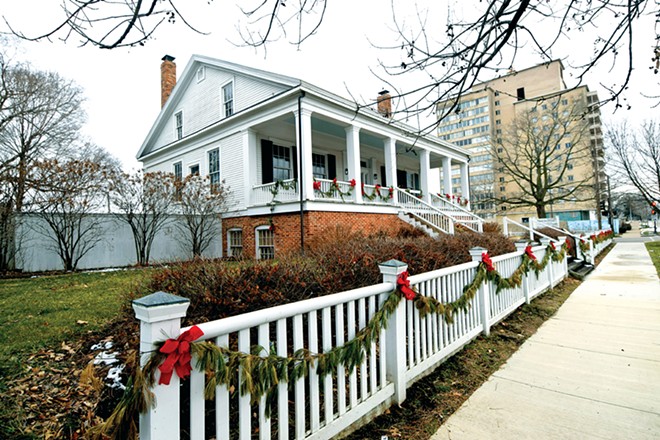
Richard Hart is a member of both the Elijah Iles House Foundation and the Abraham Lincoln Association. He researched what it would take to get the Lincoln Cottage accepted as part of the Lincoln Home National Historic Site and said the same criteria would apply to the Iles House.
"If you get land that is contiguous to an existing National Park, you can expand the boundaries if it doesn't exceed a certain percentage of that park," Hart said. "If you meet that criteria, you just have to go through the administrative process within the National Park Service and get the Secretary of the Interior to approve it."
"It has been 50 years since the Lincoln Home National Historic Site was formed in Springfield and there haven't been any additions to it," Hart said. "Adjoining states have more national parks than Illinois and they have utilized these expansion methods that we have never used here."
National Park Service boundary expansions must be approved by the United States Secretary of the Interior and are heavily dependent on support from that state's congressional delegation. With the Democratic administration of President-elect Joe Biden coming in, Illinois' Democratic senators Dick Durbin and Tammy Duckworth would be the two key players in the push to expand the Lincoln Home boundaries.
"I support expanding the Lincoln Home Historical Site's boundary to include both the Elijah Iles House and the Lincoln Cottage," Durbin said. "Both sites will help tell a more in-depth story of the life and legacy of Lincoln and the town that shaped him."
The Iles House Foundation would retain ownership of several assets if the Iles House property is accepted by the National Park Service. These include the Strawbridge Shepherd House at University of Illinois Springfield, funds in a Community Foundation account, the Iles House furnishings, and the parking lot at the southeast corner of Seventh and Cook streets.
The circa 1837 Elijah Iles House at 628 South Seventh Street is the oldest surviving house in Springfield. Prior to the COVID-19 pandemic it was open Wednesdays and Saturdays from April through October for public tours, and the handicapped-accessible home also hosted public programs and events. The Iles House's historic main level is furnished as would have been typical in 1840s Springfield and was listed in the National Register of Historic Places in 1978.
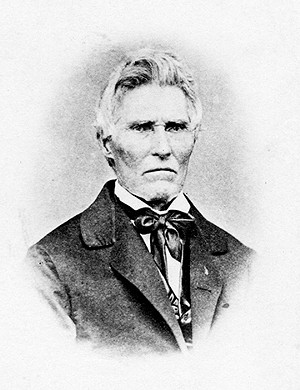
The Lincoln Cottage will be a replica of the original, Greek-revival-style home built in 1839 for the Reverend Charles Dresser, from whom Lincoln bought the home in 1844. In 1856 the second story was added to the home and the number of rooms doubled to 12, giving the Lincoln Home its current appearance.
The Abraham Lincoln Association (ALA) has raised more than half of the $400,000 necessary to acquire land in the 600 block of Eighth Street between Edwards and Cook and to design, construct, landscape and furnish an accurate replica there of the original one-and-a-half-story, six-room Lincoln family dwelling.
"It would be ideal to have a replica of the cottage that existed before it was expanded into a two-story house to give people an idea of what life was like in the Lincoln Home for 12 years before it became a major house which they lived in for five years," Burlingame said. "The emotional insight you gain by being in a space, not just reading about it or seeing a little model of it, gives you an appreciation of what life was really like in those conditions."
Burlingame said the ALA hopes to start construction on the cottage this summer, contingent on an agreement with the National Park Service.
Having the Iles House and the Lincoln Cottage under the auspices of the National Park Service would be a boon to local tourism promotion efforts.
"The Springfield Convention and Visitors Bureau focuses its marketing efforts on driving overnight hotel stays," said Scott Dahl, director of the bureau. "Becoming part of the Lincoln Home National Historic Site and Lincoln neighborhood will significantly increase the exposure the Elijah Iles House receives, which in turn will increase the number of visitors touring the home of one of the city's earliest settlers.
"As a destination centered on history, the added publicity the house receives as part of the Lincoln neighborhood could lead to visitors staying in Springfield longer, further stimulating tourism's economic impact," Dahl said. "The Elijah Iles House has been a prominent feature during History Comes Alive, our signature summer program. Joining the NPS family will provide new opportunities for even more programming at the site."
The Lincoln Home in Springfield and the Pullman National Monument in Chicago are currently the only two sites in Illinois administered by the National Park Service. However, the Park Service will begin a study this year, authorized by Congress and signed by the president, to examine 1908 Springfield Race Riot sites for inclusion in the National Park system.
The Park Service has nearly completed a study on accepting New Philadelphia, a town location in Pike County that was plotted and established by African Americans before the Civil War. The village of Prairie du Rocher in southern Illinois, with its early French heritage, is being studied to determine whether that area should be added to the National Park System.
Legislation is expected to be introduced in the next session of Congress to allow the National Park Service to perform a special resource study of Cahokia, the site near Collinsville that was the location of an ancient Native American metropolis. As with the other ongoing studies, such an examination could signal an interest in making Cahokia into another Park Service site.
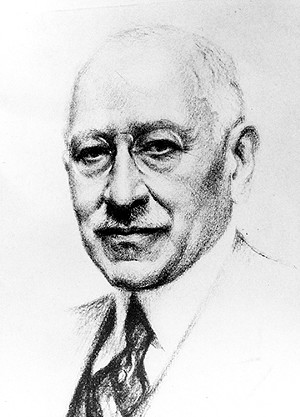
"An idea whose time has come"
The Lincoln Home site boundaries didn't have to be extended for the Rosenwald Home, which sits catty-corner to the Lincoln Home itself and is used as the main staff office for the National Park Service site.
The home was renamed Feb. 12, 2020, in honor of Julius Rosenwald, the president of Sears, Roebuck and Co. and a major philanthropist who moved as a child with his family from another residence in Springfield to the Eighth Street home in 1869. An exhibit panel at the home memorializes the assistance that Rosenwald provided to hundreds of primarily African American artists and scholars, including author W.E.B. Dubois, poet Langston Hughes and singer Marian Anderson.
"Learning the legacy of Julius Rosenwald is an idea whose time has come," said Nancy Sage, executive director of the Jewish Federation of Springfield and a founding member of the local Rosenwald Initiative. "The Springfield community can take pride in that legacy."
As of press time a bill was awaiting the president's signature that would authorize the study of multiple Rosenwald sites throughout the country to add them as units to the National Park Service.
"Springfield is where Julius Rosenwald was born and his donations helped to start the NAACP as a reaction to the horrors of the 1908 Springfield Race Riots," Sage said. "We are now pursuing a mural that will face the Rosenwald Home, and have been involved in supporting the legislation for the Rosenwald National Park."
Rosenwald used his considerable fortune to fund a number of charitable causes, including a private-public partnership that helped to build more than 5,000 schools for more than 600,000 African American children in the segregated south between 1917 and 1932.
The Rosenwald National Park could include some of those school buildings as well as a visitor center in Chicago as part of a thematic, scattered-site experience.
Sage said that Springfield's Rosenwald Initiative began in late 2017 when organizers joined with Black community members to screen a Rosenwald documentary.
"Through showing the film and understanding Rosenwald's philanthropy we learned together and built a sense of pride. We also at that time knew we weren't done with Julius Rosenwald, that we wanted the initiative to continue," Sage said. "We also did not know that there was a parallel pursuit going on to create a Rosenwald National Park. When we learned of each other's existence it was fabulous."
Dorothy Canter, president of that national effort, attended the dedication of the Rosenwald Home in Springfield.
"Rosenwald strongly held forth the Jewish tradition of Tzedakah, which comes from the word 'justice' in Hebrew, and essentially is defined as why those who benefit from assistance are obligated to give to those who are less fortunate," Sage said. "Also Tikkun Olam, the value of repairing the world. That's the Jewish side of Rosenwald, and that's why we think he did what he did so anonymously."
"I grew up in Chicago, and my mother always told me that the Museum of Science and Industry should have been named the Rosenwald Museum, but he didn't want his name on any building," Sage said. "That was my personal introduction to Rosenwald."
Sage said the inclusion of the Iles House and the Lincoln Cottage into the historic site that already memorializes Lincoln and Rosenwald seems like a natural fit.
"Rosenwald grew up across the street from Lincoln's home. He drew inspiration from Lincoln," Sage said. "These new additions would add to our understanding of these great men."
Trump approves study of Rosenwald sites for National Park System
On Jan. 13 President Donald Trump, during the final week of his administration, signed into law House Resolution 3250, the Julius Rosenwald and the Rosenwald Schools Act of 2020.
The new law requires the Secretary of the Interior to conduct a special resources study of the sites associated with the life and legacy of Julius Rosenwald and the Rosenwald Schools to determine the suitability and feasibility of designating the study area as a unit of the National Park System. One of those sites is the Rosenwald Home that is now part of the Lincoln Home National Historic Site.
Julius Rosenwald, a major philanthropist and president of Sears, Roebuck and Co., moved into the Rosenwald Home as a child with his family in 1869. The just-approved study could authorize the establishment of a scattered-site Rosenwald National Park that could include his home in Springfield, several schools whose construction he funded in the south, and a visitor center in Chicago.
–David Blanchette








